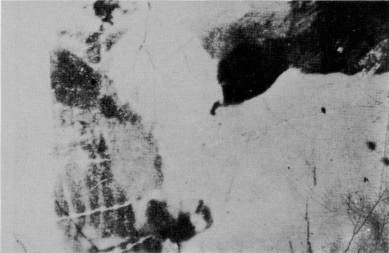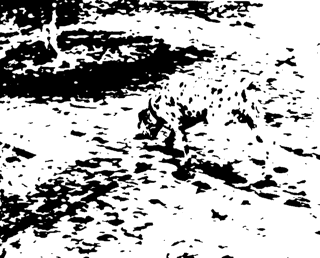observation
Some Words on Observation Proficiency - Part I
01.01.12 - 13:07 - Filed in: Software Testing
One important element of software testing is applying the right set of methods, approaches and actions in the right context in order to gain data. Another important element then is observation of the data. By observing well it is that you find potential bugs. Therefore - as a self-respecting tester - it is probably a good idea to become a good observer.
I like Wikipedia’s definition of observation:
But, how to become a better observer?
Deliberate practice leads to proficiency, and because I enjoy providing a good service - voilà - here’s an opportunity to hone your skill. What do you see on the picture below?

If you feel like it, you may let me know your solution here.
Games have always been the most efficient (and at the same time most joyful) approach to learning. It is by playing games that kids learn about life. Lumosity is an excellent website that I highly recommend if you want to train your observation skills. I like the games Bird Watching, Space Junk or Top Chimp.
I like Wikipedia’s definition of observation:
“Observation is either an activity of a living being, such as a human, consisting of receiving knowledge of the outside world through the senses, or the recording of data using scientific instruments.”
But, how to become a better observer?
Deliberate practice leads to proficiency, and because I enjoy providing a good service - voilà - here’s an opportunity to hone your skill. What do you see on the picture below?

If you feel like it, you may let me know your solution here.
Games have always been the most efficient (and at the same time most joyful) approach to learning. It is by playing games that kids learn about life. Lumosity is an excellent website that I highly recommend if you want to train your observation skills. I like the games Bird Watching, Space Junk or Top Chimp.
Some Words on Observation Proficiency - Part II
04.01.12 - 16:38 - Filed in: Software Testing
Quite interestingly in the quiz of Part I on observation proficiency, there was a surprising additional answer among the extraordinarily numerous comments - that there was a sleeping young woman on the picture.
By looking at it again I can now actually identify at least 2 sleeping women: a big one on top right of the picture and a small one that is lying on the belly and looking in the direction of the observer. Who knows, there might be even more! Just apply some more pattern matching mechanisms and pair it with a little bit of fantasy - and there you are!
We humans could also be defined as pattern matching machines. In my opinion that is how we survived to eventually become software testers. Let’s pause here and say a sincere “Thank you!” to our ancestors who constantly asked themselves: “Could this shade there be a nasty smilodon salivating in my direction?”
Anyway, read Francisca’s comment to the last post to also see the answer I was initially looking for. (And I say “Hello Francisca” here, because I happen to know her)
Now, in this post let’s have a walk-through with how observation and pattern matching of such an image actually works. To start with, here’s the picture:

There are different things happening in your brain now:
Stage 0: Surprise - Oh! Look at that! A picture with a mess of funny dots!
Stage 1: Reflection - Hm, what could that be?
Stage 2: Analysis - Ok, let’s see, there are some black dots and some shadier areas.
Stage 3: Hypothesis - That sure looks like a UFO up there, doesn’t it?
Stage 4: Disillusion - Oh, no! That’s not it. It is just a big mess of dots here.
Stage 5: Enlightenment - Ah, look at that! It’s a Dalmatian sniffing on the floor
And then you’re done!
And what does all this sound like? Let’s translate to an other domain:
Stage 0: Surprise - Oh! Look at that! A nice piece of software!
Stage 1: Reflection - Hm, what could that be?
Stage 2: Analysis - Ok, let’s see, there are some buttons to press and some UI elements to look at.
Stage 3: Hypothesis - That sure looks like an entry field up there, doesn’t it?
Stage 4: Disillusion - Oh, no! That’s not it. It is just a big mess of dots here.
Stage 5: Enlightenment - Ah, look at that! It’s a bug sniffing on the floor
Yes, I know, it’s obvious. This is Exploratory Testing!
By looking at it again I can now actually identify at least 2 sleeping women: a big one on top right of the picture and a small one that is lying on the belly and looking in the direction of the observer. Who knows, there might be even more! Just apply some more pattern matching mechanisms and pair it with a little bit of fantasy - and there you are!
We humans could also be defined as pattern matching machines. In my opinion that is how we survived to eventually become software testers. Let’s pause here and say a sincere “Thank you!” to our ancestors who constantly asked themselves: “Could this shade there be a nasty smilodon salivating in my direction?”
Anyway, read Francisca’s comment to the last post to also see the answer I was initially looking for. (And I say “Hello Francisca” here, because I happen to know her)
Now, in this post let’s have a walk-through with how observation and pattern matching of such an image actually works. To start with, here’s the picture:

There are different things happening in your brain now:
Stage 0: Surprise - Oh! Look at that! A picture with a mess of funny dots!
Stage 1: Reflection - Hm, what could that be?
Stage 2: Analysis - Ok, let’s see, there are some black dots and some shadier areas.
Stage 3: Hypothesis - That sure looks like a UFO up there, doesn’t it?
Stage 4: Disillusion - Oh, no! That’s not it. It is just a big mess of dots here.
Stage 5: Enlightenment - Ah, look at that! It’s a Dalmatian sniffing on the floor
And then you’re done!
And what does all this sound like? Let’s translate to an other domain:
Stage 0: Surprise - Oh! Look at that! A nice piece of software!
Stage 1: Reflection - Hm, what could that be?
Stage 2: Analysis - Ok, let’s see, there are some buttons to press and some UI elements to look at.
Stage 3: Hypothesis - That sure looks like an entry field up there, doesn’t it?
Stage 4: Disillusion - Oh, no! That’s not it. It is just a big mess of dots here.
Stage 5: Enlightenment - Ah, look at that! It’s a bug sniffing on the floor
Yes, I know, it’s obvious. This is Exploratory Testing!